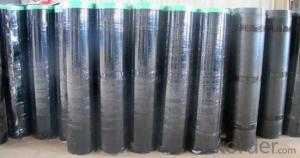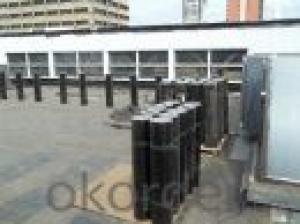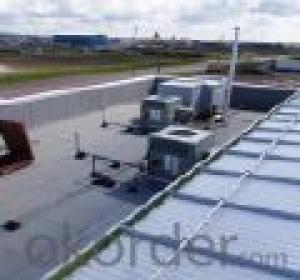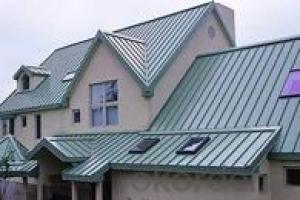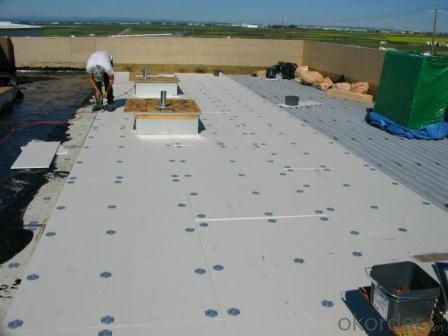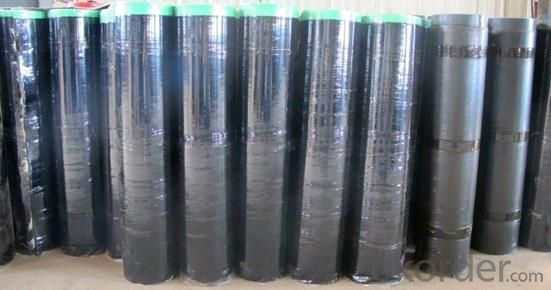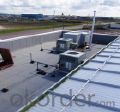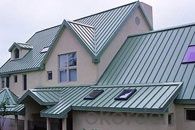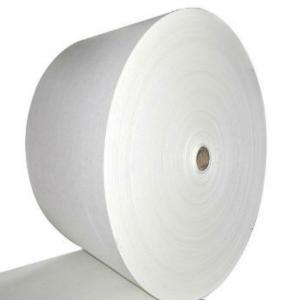Spunbond Polyester Mat /filament Polyester Mat For APP/SBS Waterproof Membranes
- Loading Port:
- Shanghai
- Payment Terms:
- TT OR LC
- Min Order Qty:
- 1000 m²
- Supply Capability:
- 200000 m²/month
OKorder Service Pledge
OKorder Financial Service
You Might Also Like
Product description
Produced by the Modern Waterproofing Company,Spunbond Polyester Mat /filament Polyester Mat For APP/SBS Waterproof Membranes is a line of polymer-modified bitumen waterproofing membrane of the highest quality.
Spunbond Polyester Mat /filament Polyester Mat For APP/SBS Waterproof Membranes is modified by SBS, thus guaranteeing high flexibility under very low temperature.
SBS Waterproofing membranes reinforced with Polyester suitable hot and cold atmospheres - Cold Flexibility -10 : -20 C
Spunbond Polyester Mat /filament Polyester Mat For APP/SBS Waterproof Membranes is reinforced with composite polyester (P) of non-woven polyester armoured with glass fiber filaments which provides highly mechanical properties and dimensional stability.
Spunbond Polyester Mat /filament Polyester Mat For APP/SBS Waterproof Membranes with Mineral Slated Finish is recommended for exposed roofing system (Unprotected) for Non-accessible roofs or roofs subject to low traffic conditions
Packaging & Shipping
Package and transportation-- SBS waterproof membrane / APP waterproof membrane / Asphalt waterproof membrane for building waterproofing construction :
1. Torch on bitumen membrane sheets 4mm should be stored under dry and ventilated conditions.
2. Different types of membranes must be piled separately.
3. Under usual condition, storage period is one year since production date.
4. Membrane roll should be put vertically during transportation. It should be kept away from sunshine and rainwater.
.
Advantagee
Easy to apply (by torch)
Highly mechanical properties
Absolute impermeability to water
High elasticity at sever low temperature from -10°C up to -20°C
Resistant to chemicals attack probable to be existing in soil
Excellent high temperature performance
Excellent adhesion on any surface
High dimensional stability
Environmentally friendly
Applicable scope:
It is widely used for civil building roofing, underground, bridge, parking, pool, tunnel in the line of waterproofing and dampproofing, especially for the building under high temperature.
Product Range
Standard thickness available includes 3mm and 4mm. Some types could be available by weight 3kg/m2 and 4kg/m2.
Bottom surface finish is normally Polyethylene Film (PE).
Upper surface finish choices include:
Polyethylene Film (PE)
Fine Sand (S)
Mineral Slated Grey (GY)
Mineral Slated Green (GRN)
Mineral slated White (WT)
Mineral slated Red (RD)
Slated rolls are available in 4kg, 4.5kg and 5kg per square meter.
The nominal length of each roll is 10 meters and the nominal width is one meter.
Special specification can be designed based on client’s need
Storage:
Different types or specifications of products should be separated, not mixed.
Keep it dry and ventilated, protected from the sun or rain.
Storage temperature should never be higher than 45 °C. Pile up the membranes flatwise whose stockpile height never exceeds five layers. One layer is guaranteed if it is placed vertically.
Prevent it from inclination or In the process of transportation, it should be lying in case of inclination or lateral pressure. If necessary, cover it with felt-cloth.
Storage time is at least one year from manufacture date on if the product is under normal operation of storage.
Technical Parameters
Item | Index | ||||||
1 | Thickness of resin layer of the middle fabric ,mm≥ | - | - | 0.40 | 0.40 | 0.40 | |
2 | Tensile performance | Max tensile strength,N/cm ≥ | - | 120 | 250 | - | 120 |
Tensile strength,NPa ≥ | 10 | - | -10 | - | - | ||
Max elongation% ≥ | - | - | 15 | - | - | ||
Breaking elongation % ≥ | 200 | 150 | - | 200 | 100 | ||
3 | Heat treatment size change rate%≤ | 2.0 | 1.0 | 0.5 | 0.1 | 0.1 | |
4 | Cold bonding | -25°c No cracks | |||||
5 | Watertightness | 0.3mPa,2h waterproof | |||||
product show
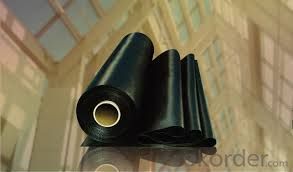
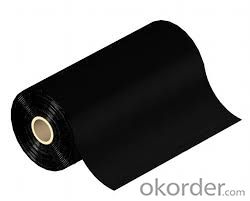
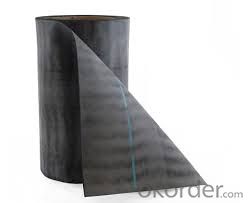
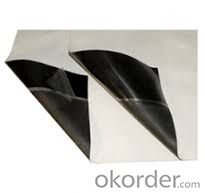
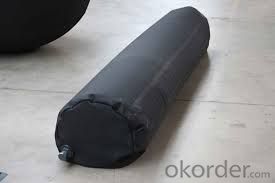
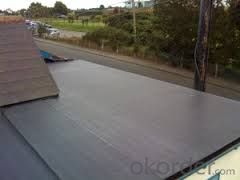
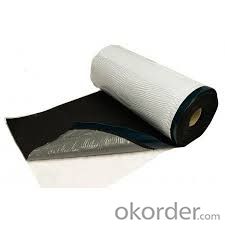


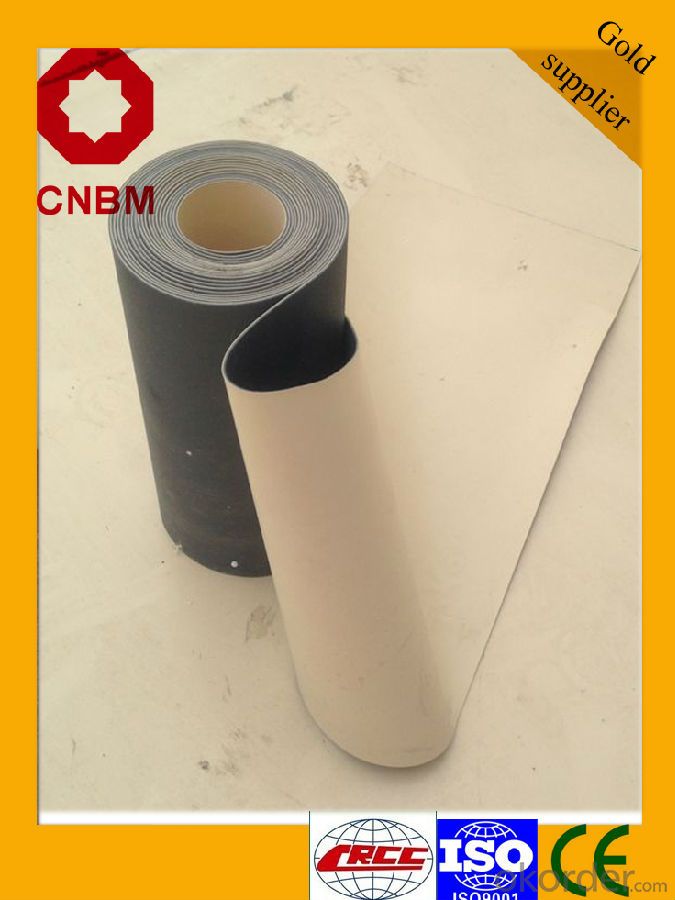
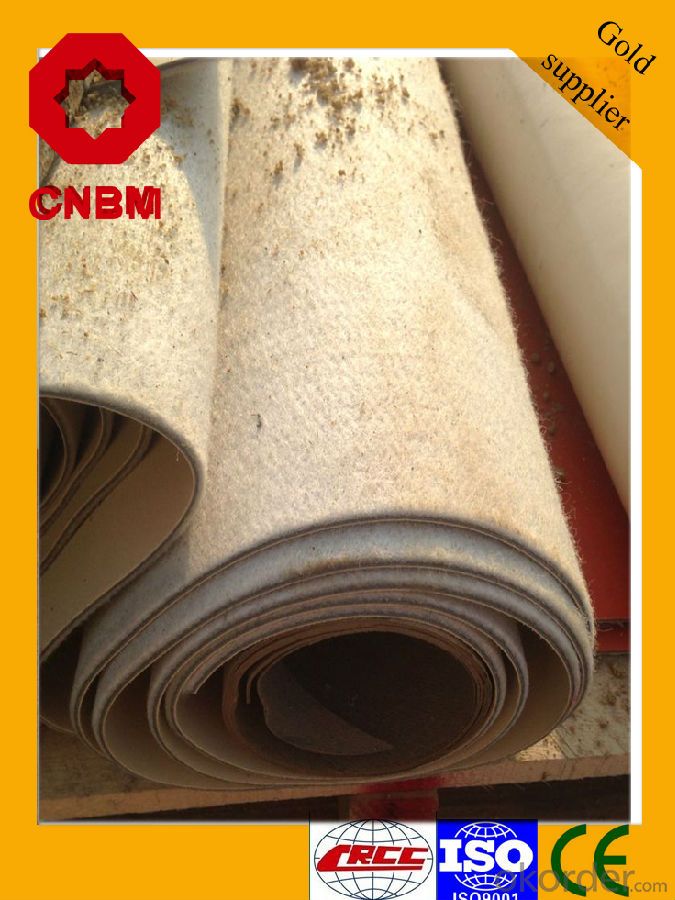
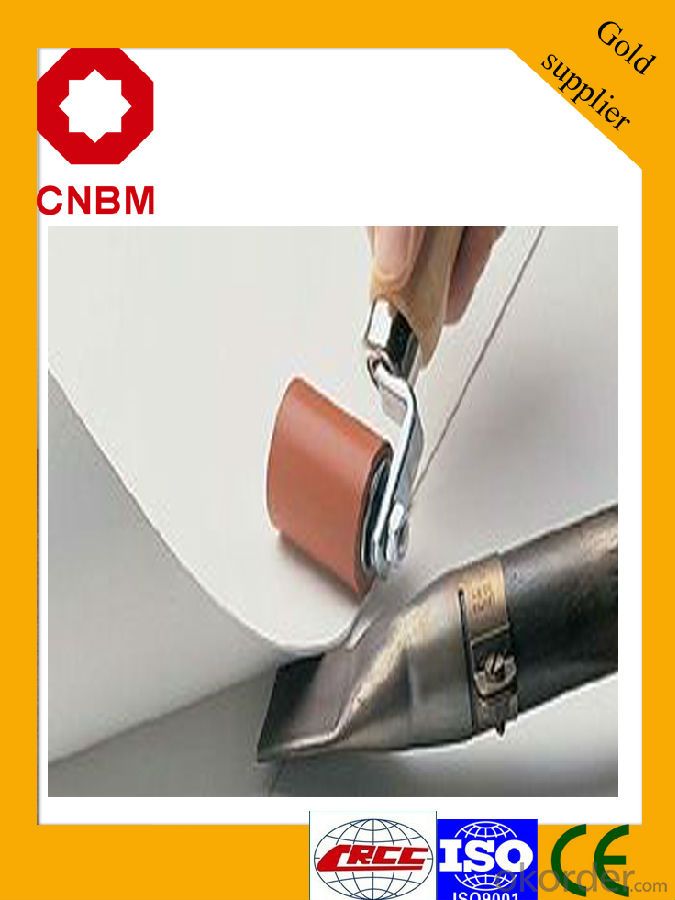
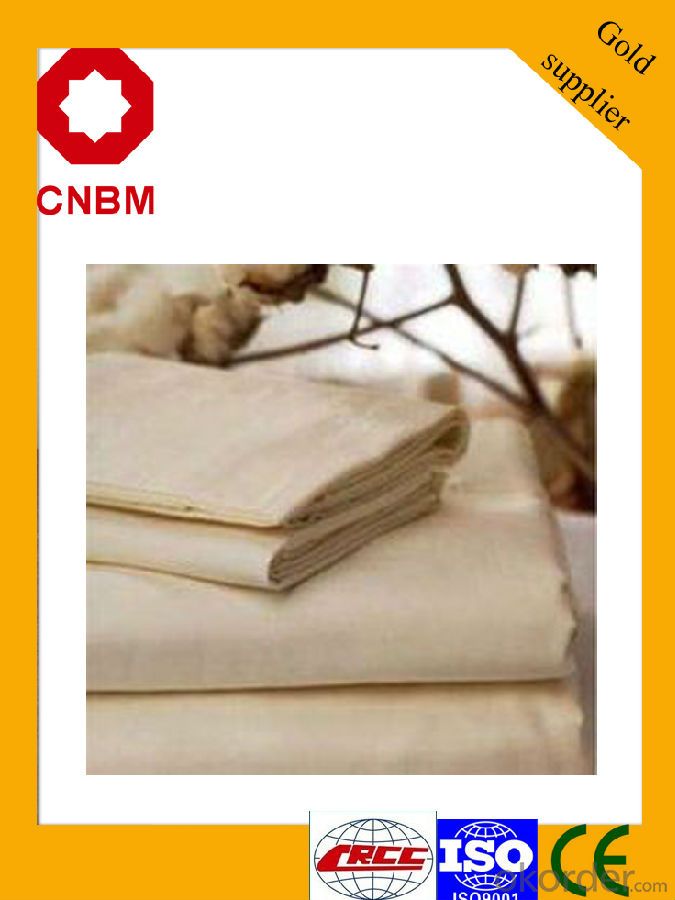
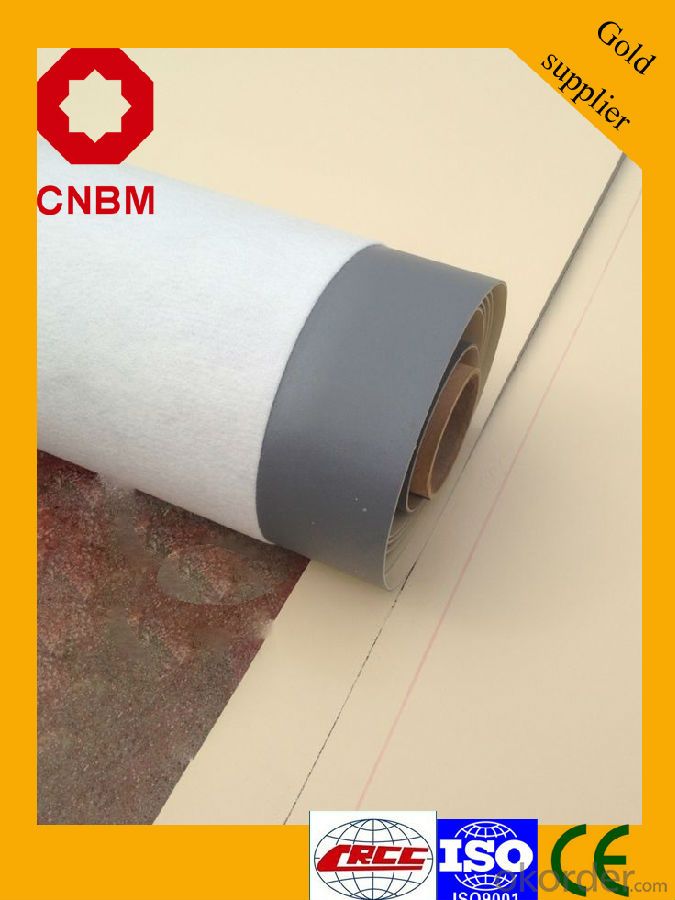
FAQ
Q: What's the de6abf1fe186f8d58506cbcfe46eed814d.jpglivery time ?
A: 3-5 days for 1-600 rolls, 10-15 days for container.
Q: What's the payment terms ?
A: TT/LC
Q: How do you make replacement with quality problems ?
A: New replacement will be packed into your next order or send to you directly after receive video or photo about quality problems.
- Q: Are waterproofing membranes effective against mold and mildew?
- Waterproofing membranes effectively combat mold and mildew by acting as a barrier against water infiltration. This barrier reduces moisture, which is essential for mold and mildew growth. By sealing the surface, these membranes prevent water intrusion and the subsequent moisture buildup that fosters mold and mildew formation. Some waterproofing membranes even have anti-microbial properties that specifically hinder the growth of mold and mildew. Nevertheless, it is crucial to remember that in order to achieve long-term prevention, proper building ventilation and maintenance are also imperative, despite the significant risk reduction provided by waterproofing membranes.
- Q: Is a waterproofing membrane resistant to chemicals?
- Yes, a waterproofing membrane is generally resistant to chemicals. Waterproofing membranes are designed to provide a protective barrier against water and moisture, and they are often made of materials that are chemically resistant. However, the level of chemical resistance may vary depending on the specific type of membrane and the type of chemicals it comes into contact with. It is important to consult the manufacturer's specifications and recommendations to ensure the membrane is suitable for the intended chemical exposure.
- Q: Are waterproofing membranes suitable for high-traffic areas?
- Yes, waterproofing membranes are suitable for high-traffic areas. Waterproofing membranes are designed to provide a protective barrier against water infiltration, preventing water damage and maintaining the integrity of the structure. High-traffic areas, such as walkways, driveways, parking lots, and other heavily used spaces, are prone to constant exposure to water, which can lead to structural damage and deterioration over time. By applying a waterproofing membrane, these areas can be effectively protected from water intrusion, ensuring their durability and longevity. Additionally, waterproofing membranes are often designed to be slip-resistant, providing an added safety feature in high-traffic areas. Therefore, using waterproofing membranes in high-traffic areas is a wise choice to mitigate water-related issues and maintain the structural integrity of the space while ensuring the safety of occupants.
- Q: Can waterproofing membranes be used on underground tunnels?
- Yes, waterproofing membranes can be used on underground tunnels. These membranes are specifically designed to provide protection against water infiltration and can be applied to the tunnel walls and floors to prevent water ingress. The membranes create a barrier that keeps the tunnel dry, ensuring its structural integrity and preventing damage from moisture.
- Q: SBS modified asphalt waterproofing membrane and synthetic polymer membrane the same, not the same, what is the difference?
- fiber fabric or fiber felt For the carcass, powdery, granular, flake or film material for the cladding material made of curled sheet waterproof material. The use of the construction process is cold construction paving or hot melt paving.
- Q: How does a waterproofing membrane handle exposure to high temperatures?
- The ability of a waterproofing membrane to withstand high temperatures relies on its composition and quality. These membranes are typically made from durable materials like bitumen, EPDM, or PVC, which have high melting points and can resist heat. These materials are carefully selected to ensure that the membrane remains intact and effective even when exposed to elevated temperatures. The resistance of high-quality waterproofing membranes to heat is enhanced through the use of additives and fillers during manufacturing. These additives help the membrane maintain its integrity, preventing it from softening, melting, or becoming brittle under high temperature conditions. Additionally, the successful installation of the waterproofing membrane is crucial to its ability to handle high temperatures. Proper installation techniques, such as ensuring adequate adhesion and seam sealing, are essential for maintaining the membrane's effectiveness and preventing any potential damage caused by heat exposure. To summarize, waterproofing membranes are specifically engineered to withstand high temperatures. Their composition, quality, and installation techniques all contribute to their ability to resist heat without deteriorating or losing their waterproofing properties.
- Q: Can a waterproofing membrane be used in conjunction with green building practices?
- Yes, a waterproofing membrane can definitely be used in conjunction with green building practices. In fact, incorporating a waterproofing membrane into the construction of a green building can help enhance its overall sustainability and efficiency. One of the key principles of green building practices is to maximize energy efficiency and reduce the environmental impact of a building. By installing a waterproofing membrane, the building's envelope can be protected from moisture intrusion, preventing water damage and potential mold growth. This, in turn, helps maintain the structural integrity of the building, reducing the need for repairs and replacements, which can be resource-intensive and generate waste. Additionally, a waterproofing membrane can contribute to better indoor air quality. By preventing water infiltration, it helps create a dry and healthy living or working environment, minimizing the risk of respiratory issues and other health problems associated with dampness. Furthermore, a waterproofing membrane can improve the energy efficiency of a building. By preventing water from seeping into the walls or foundation, it reduces the potential for heat loss through moisture evaporation, thus reducing the energy needed for heating and cooling. This can lead to reduced energy consumption and lower carbon emissions, aligning with the goals of green building practices. It is important, however, to choose a waterproofing membrane that is environmentally friendly and meets green building standards. Look for membranes that are made from recycled or sustainable materials and have low VOC (volatile organic compound) content. Additionally, consider selecting a membrane that is designed for durability and longevity, as this can further reduce the environmental impact by minimizing the need for replacement over time. In conclusion, a waterproofing membrane can be a valuable addition to any green building project. It helps protect the building envelope, improves indoor air quality, and enhances energy efficiency. By selecting an environmentally friendly membrane, the overall sustainability of the building can be further improved.
- Q: How does a waterproofing membrane handle water vapor transmission?
- A waterproofing membrane handles water vapor transmission by preventing the passage of water vapor through its surface. It acts as a barrier to prevent moisture from penetrating the membrane, thus protecting the underlying structure from potential damage caused by moisture.
- Q: How long does it take for a waterproofing membrane to cure or dry?
- The time it takes for a waterproofing membrane to cure or dry can vary depending on various factors such as the specific product used, environmental conditions, and application method. However, on average, it usually takes around 24 to 48 hours for a waterproofing membrane to fully cure and dry. It is important to follow the manufacturer's instructions and allow sufficient time for the membrane to properly cure before subjecting it to water or other elements.
- Q: Can a waterproofing membrane be used for a foundation?
- Yes, a waterproofing membrane can be used for a foundation. Waterproofing membranes are designed to provide a barrier against water infiltration and can be used to protect the foundation from moisture damage. These membranes are typically made from materials such as bitumen, rubberized asphalt, or polymer-based sheets that are installed on the exterior side of the foundation walls. They are designed to prevent water from seeping into the foundation, which can help to prevent potential issues such as water damage, mold growth, and structural deterioration. It is important to ensure that the waterproofing membrane is properly installed and meets the specific requirements of the foundation to ensure its effectiveness.
Send your message to us
Spunbond Polyester Mat /filament Polyester Mat For APP/SBS Waterproof Membranes
- Loading Port:
- Shanghai
- Payment Terms:
- TT OR LC
- Min Order Qty:
- 1000 m²
- Supply Capability:
- 200000 m²/month
OKorder Service Pledge
OKorder Financial Service
Similar products
Hot products
Hot Searches
Related keywords

